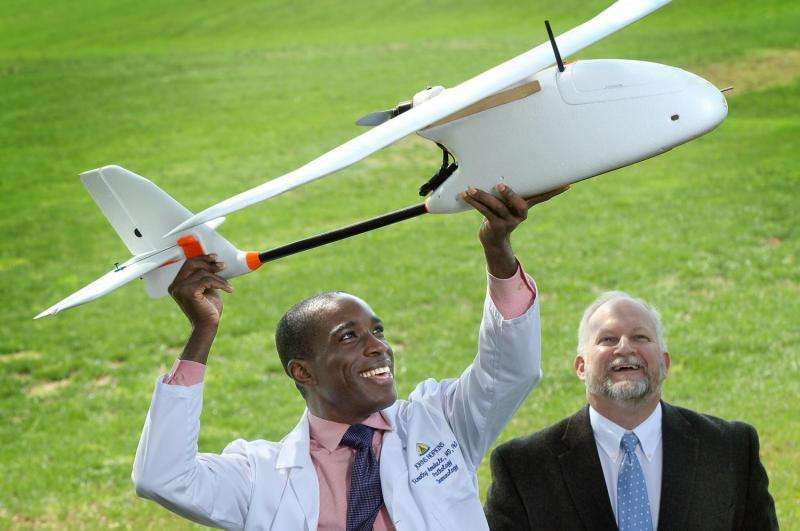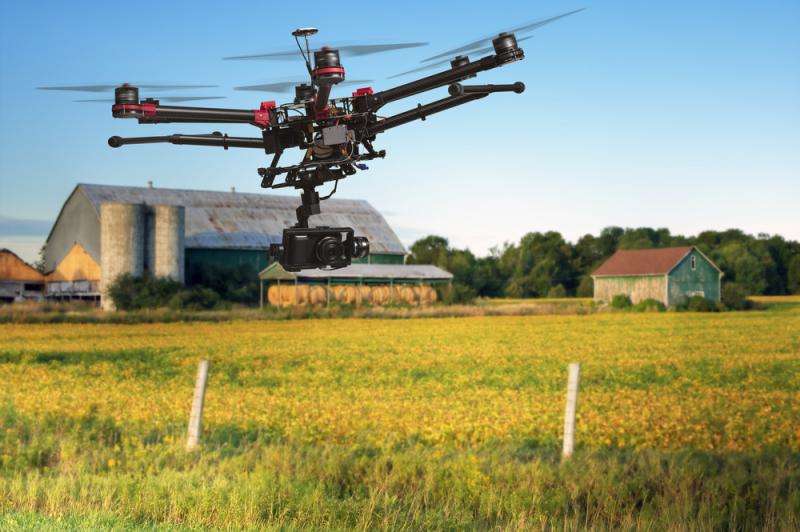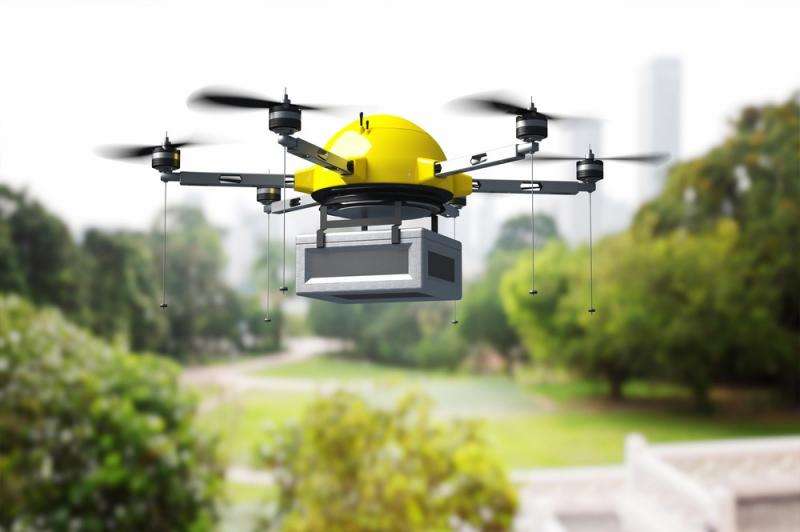Flying robot technology is helping researchers find new ways to deliver medical aid to remote areas, monitor the environment and more.
The World Health Organization estimates 11,314 people have died since the latest Ebola outbreak struck West Africa in March 2014. This outbreak reached epidemic proportions for many reasons, including the fact that initial virus-related deaths in isolated areas went unnoticed until the disease spread.
As a result, researchers are looking at drones as a faster, affordable way to diagnose patients in remote areas.
Dr. Timothy Amukele, a pathologist at Johns Hopkins School of Medicine pointed out that performing patient blood tests can be difficult, if not impossible, when the nearest pathology lab is a two-day walk and a ferry ride away from a village clinic. By that time, not only is the biological sample past viability for testing, the patient may be beyond saving.
Amukele was skeptical when the idea of using drones to transport blood samples was first posed by a grad student.
"After all, we're not talking about shipping books or shoes from Amazon," he said. "Blood is much more sensitive. Its integrity must be maintained."
The more he thought about it, however, the more intriguing the idea became.
"It's cheaper than using motorcycles, which are commonly used for transport in Africa," said Amukele. "You don't have to worry about lack of roads or difficult terrain, because it's traveling as the crow flies."
In July, Amukele worked with two UAV engineers to perform a proof-of-concept test at a site outside of Baltimore. They took 56 blood samples donated by volunteers and loaded them into a drone for flights of up to 38 minutes in length.
For comparison, another 56 samples were transported by car.
In the end, the drone-flown samples showed no deterioration in important characteristics like red cell counts and glucose levels, proving that drones could be a viable alternative for transporting samples.
This delivery method would work for the most common lab tests, which make up about 80 percent of all lab tests conducted.
To expand on this proof of concept, Amukele conducted a second phase of testing in late October to examine the effect of drone flight on live microbe samples. These are the kind used for less common (though equally important) microbe biological tests, such as those used to grow bacteria for a lung or urinary tract infection in order to determine sensitivity to specific antibiotics.
Amukele is in the process of analyzing and compiling the data, but he said the preliminary results were promising.
Next up is real-world testing: a pilot project on the ground—and in the air—in a rural region of East Africa.
Amukele, whose research interests have focused on improving the quality of clinical laboratories in Sub-Saharan Africa since he spent time in Nigeria as a child, has been working in tandem with government officials and medical personnel in the region in recent months to prepare for the pilot kick-off.
"If it works, the impact will be huge," said Amukele, noting that, with increased access, patients will be diagnosed and treated earlier.
For Amukele, this means drone technology will save lives.
The cost-effectiveness of drones compared with current transportation methods could help much needed medical aid reach remote areas. Amukele said this could transform the way samples are shuttled around in every part of the world.
He received inquiries from Indonesia, where many of the archipelago's more than 900 inhabited islands lack a medical lab for testing samples.
Clinics and hospitals in large urban centers in the U.S. have reached out to him about using drones as a faster, more cost-effective way to transport samples across the city to a central lab for analysis.
"Drones are now being used to help humanity and tackle global issues," said Eddie Codel, the digital photographer and drone enthusiast behind the first-ever Flying Robot International Film Festival taking place November 19 in San Francisco. The festival features a category devoted to "drones for good."
"They're being used to fight fires and find missing people," said Codel. "They're being used to monitor the environment. They're providing access to people in areas that are otherwise unreachable, delivering aid and supplies."
The applications are as limitless as the imagination, he said.
Here are four drones for social good films featured in next week's festival:
The Syria Airlift Project uses drones to deliver food and medical aid to people in war-torn Syria, without putting other humans at risk to deliver such aid.
Mark Jacobsen, Founder and Executive Director of Uplift Aeronautics, said he sees drones as a way to combat those who would use starvation and medical deprivation as weapons of war.
Skycatch Relief provided relief in Nepal after a 7.8-magnitude earthquake reduced the area to rubble in April. Not only did Skycatch deliver relief supplies such as Mylar blankets and raincoats for the nearly 3 million displaced, they also used 3-D mapping to assess damage to buildings and historical sites to determine habitability and to aid in rebuilding.
In 2014, Tushevs Aerials traveled to the Peruvian Amazon to launch the Rainforest Airforce to train indigenous leaders to use drones to monitor and protect the rainforest on their land.
The training was hosted by AIDESEP, Peru's largest indigenous peoples' network, with participants from the Loreto and Madre de Dios Amazon provinces.
Waterfly, a collaborative project between MIT and the University of Toronto, uses cutting-edge sensing technology and a swarm of drones to scan lakes and rivers. The goal is to detect microscopic cyanobacteria which can threaten wildlife, human health and drinking water.
Working together as a team, the aerial robots use hyperspectral imaging and water probes to gather data about the water ecology and send it back to scientists via the Web.
As the technology continues to advance, new opportunities will arise, said Codel.
"Drones can expand the boundaries of what is possible," he said. "Drones can serve as an extension of our humanity."
Provided by Intel






















